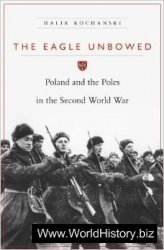Bombing for transportation targets, which served the purpose of strategic attack upon Germany’s industrial and adminstrative basis and also that of tactical attack upon her military lines of communication, which was required for the success of Allied military operations. Tedder’s services were appreciated by Eisenhower but, perhaps because his position was ill-defined, not by many others, including Churchill, Montgomery and Harris. He became cas after the war. ANF.
Tehran Conference 1943 see Cairo
AND TEHRAN CONFERENCES.
Telissu, Battle of (June 14-15 1904), Russo-Japanese War. A Russian force of 25,000 men (losses 3,500), moving to reinforce Port Arthur, was repulsed by the
35,000-strong (losses 1,200) Japanese Second Army.
Tell el Eisa, Battle of (July 10 1942). XXX Corps (Ramsden) attacked from the northern end of the El Alamein Line with 1st South African and 9th Australian Divisions. Both took their objectives, but Rommel succeeded in sealing off the penetration.
Tempest, Hawker (Br, WWII). Single-seat fighter. Prototype flew September 2 1942; first production June 21 1943; deliveries to squadrons April 1944. As a much-improved development of the Typhoon, the Tempest proved superior to Fw 190 and Bf 109; particularly successful against V-ls (destroyed 638). Tempest II (Centaurus engine) into service late 1945; this variant operational Malaya, anti-terrorist strikes. Production, 1,414. One 2,180/2,340hp Napier Sabre IW, or 2,520hp Bristol Centaurus V or VI engine; max. speed 438mph (705kph); four 20mm cannon, 2,0001b (900kg) bombs or eight 3in rockets.
Templer, Field Marshal Sir Gerald (1898-1979). Br. As High Commissioner and Director of Operations Malaya (1952-54), Templer applied the resettlement policy of Gen Briggs, succeeding in isolating communist terrorists of the MRLA from people on whose support they relied. See also
MALAYAN EMERGENCY (l948-60).
Tenaru river, Battle of the (August 21 1942). The first Japanese reinforcements to reach Guadalcanal, c800 men of 2nd Battalion, 28th Infantry (Col Kiyono Ichiki), landed from destroyers on August 18—19. Ichiki immediately moved to attack Henderson Field: from 0310 hours, August 21, Japanese troops attempted to storm the positions of 2nd Battalion, 1st Marine Division, at the mouth of the Tenaru (Ilu) river. The perimeter was held; meanwhile, 1st Battalion, 1st Marines, crossed the Tenaru upriver to cut off the Japanese retreat. By 1700 hours, after mopping-up by usMC tanks, 660 Japanese had been killed and 15 captured: Ichiki committed sui
Cide. USMC losses were 35 dead, 75 wounded. RO’N.
Tennessee. US battleship. Name ship of class; sister-ship California. 32,600 tons standard; 12 x 14in guns. Completed 1920. Damaged at Pearl Harbor. Rebuilt and back in service 1943. Scrapped in 1959.
Tenth Air Force (US). Activated in US February 1942 and assigned to China-Burma-India Theatre. Provided tactical, strategic and logistic support for variety of operations, including Chindits.
Tenth Army (US). Although a new formation formed in June 1944, most of the Tenth Army’s infantry and marine units were combat veterans. It took part in the invasion of the Ryukyu islands, losing its commander, Lt Gen Buckner, in the fierce fighting on Okinawa. His successor for the remainder of the campaign was Gen Joseph Stilwell.
Tenth Fleet (US). Set up May 1943 and ended June 1945. The shore-based command concerned with the US Navy’s anti-submarine operations in the Atlantic.
Terauchi, Field Marshal Count Hisaichi (1879-1945). Jap. Minister of War, 1935; c-in-c Northern China, 1937. Terauchi was appointed c-in-c Southern Area Army in November 1941. A ruthless imperialist, he urged on the construction of the infamous Bur-ma-Siam railway, 1942-43, and decreed the defence a outrance of Leyte, 1944-45.
Termoli, Battle for (October 3-6 1943). Montgomery landed the Special Service Brigade (Commandos) and two brigades of 78th Division just north of Termoli to hasten his advance up the Adriatic coast. LXXVI Panzer Corps (Herr) counterattacked with 16th Panzer Division and came near to defeating the landing force before British tanks could reach the beachhead from across the Biferno.
Territorial Forces Militia, Republic of Vietnam. At American insistence the arvn neglected its militia auxiliaries in the 1950s in order to concentrate on meeting a conventional attack from the North. However, the initial threat came from insurgents within the South, and in 1964 the US helped to reorganize the Civil Guard and Self-Defence Corps as the Regional (rf) and Popular (pf) Forces. The RF consisted at first of rifle companies, which gradually developed into company groups, battalions, and finally mobile groups. From 888 companies in 1967, the rf grew to 1,810 companies (312,000 men) by 1974. pf units were never larger than platoons and fought in their own hamlets and villages. The PF in 1974 had 7,968 platoons and 220,800 troops. Together, the RF and PF from the mid-1960s onward comprised more than half of total ARVN strength; their casualties in 1968-72 were about twice those of the regular army.
While capable of manning outposts, conducting reconnaissance patrols, guarding bridges and defending hamlets against guerrillas, rf/pfs were never a match for communist main forces. Other rvn territorial forces included the Revolutionary Development (rd) cadres, the People’s Self-Defence Forces (psdf) instituted in the wake of the 1968 Tet offensive (numbering 1,000,000 members, half of them armed, by 1972), and the National Police. WST.
Territorials. Principal volunteer reserve component of British Army. Created before World War I under Haldane reforms which rationalized the many categories of reserve (militia, yeomanry, supplementary reserve etc.). Liable for service overseas once embodied by Queen’s Order. Roughly equivalent to US National Guard.




 World History
World History
![The Battle of Britain [History of the Second World War 9]](/uploads/posts/2015-05/1432582012_1425485761_part-9.jpeg)








